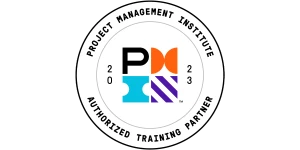The DMAIC Method in Six Sigma
The DMAIC Method in Six Sigma
The Six Sigma DMAIC process methodology is a system that brings measurable and significant improvement to existing processes that are falling below specifications. The DMAIC methodology can be used when a product or process is in existence at your company but is not meeting customer specification or is otherwise not performing adequately.
DMAIC is an acronym for five interconnected phases:
* Define the project goals and deliverables for both internal and external customers
* Measure the process to determine current performance
* Analyze and determine the root cause(s) of the defects
* Improve the process by eliminating defects
* Control future process performance
Step One: Define
In the Define phase, the Six Sigma project team identifies a project for improvement based on business objectives and the needs and requirements of the customers. Six Sigma is about “solving a problem with an unknown solution.” To unearth the solution, the problem needs to first be defined in concrete measurable terms. The team identifies critical-to-quality (CTQ) characteristics that have the most impact on quality–separating the “vital few” from the “trivial many.” With the CTQs identified the team can create a map of the process to be improved with defined and measurable, deliverables, and goals.
Step Two: Measure
In the Measure phase, the team begins with the proper metrics. Critical measures that are necessary to evaluate the success of the project are identified and determined. The initial capability and stability of the project is determined in order to establish a measurement baseline. Valid and reliable metrics to monitor the progress of the project are established during the Measure phase; input, process, and output indicators are identified. Once the project has a clear definition with a clear measurable set of indicators, the process is studied to determine the Key Process Steps and an operational plan defined to measure the indicators. Potential impacts on CTQs from each input are considered with respect to the defects currently generated in the process. Key Inputs are prioritized to establish a short list to study in more detail and to determine the potential ways the process could go wrong. Once the reasons for input failure are determined, preventative action plans are put into place.
Step Three: Analyze
Through the Analyze phase, the team can determine the causes of the problem that needs improvement and how to eliminate the gap between existing performance and the desired level of performance. This involves discovering why defects are generated by identifying the key variables that are most likely to create process variation. As the Six Sigma team moves through the Analyze stage and subsequent Improve stage of the process they will discover various process improvement scenarios and determine which has the best net benefit impact to the company. A common error people make when they discuss Six Sigma is thinking that the DMAIC model takes too long to achieve improvements. This is far from the truth. Quick improvements are often achieved early in the project and frequently already implemented by the time the team reaches the Analyze phase. If the team has not already identified major improvements, then the breakthrough often results from careful process analysis with data. Six Sigma analysis techniques are valuable tools to uncover more difficult solutions.
Step Four Improve
The Improve phase is where the process transitions into solutions. Critical inputs have been verified and optimized toward nailing down the problem causes. Once problem causes are determined in the Analyze phase, the team finds, evaluates through testing, and selects creative new improvement solutions. The team identifies and quantifies what will happen if needed improvements are not made and what will happen if the improvements take too long. This develops a cost/benefit analysis. More often than not simple process experimentation and simulation bring the team big gains in this step. Also at the Improve stage, the team develops an implementation plan with a change management approach that will assist the organization in implementing and adapting to the solutions and the changes that will result from them.
Step Five: Control
Success in the Control phase depends upon how well the team did in the previous four phases. The keys are a solid monitoring plan with proper change management methods that identify key stakeholders. Lessons learned are now implemented and tools are put in place to ensure that the key variables remain within the acceptable ranges over time so that process improvement gains are maintained. The team develops a project hand off process, reaction plans, and training materials to guarantee performance and long-term project savings. Documenting the project is very important so that the new procedures and lessons learned are maintained and provide concrete examples for the organization. At the close of the Control phase, ownership and knowledge is transferred to the process owner and process team tasked with the responsibilities. Finally, the team identifies what the next steps are for future Six Sigma process improvement opportunities by identifying replication and standardizations opportunities and plans.
Step Six: Synergize
This extra step is to ensure the gains a Six Sigma Team has made are shared with the organization as a whole. This sharing is needed to help create a learning organization. Integrating and institutionalizing the lessons learned and the improvements made multiply the real gains generated by the Six Sigma project. A Six Sigma project should not be an isolated process. It is not the end but just the beginning.
Peter Peterka is President of Six Sigma us. For additional information on Six Sigma DMAIC or other Six Sigma Black Belt project programs contact Peter Peterka.
SixSigma.us offers both Live Virtual classes as well as Online Self-Paced training. Most option includes access to the same great Master Black Belt instructors that teach our World Class in-person sessions. Sign-up today!
Virtual Classroom Training Programs Self-Paced Online Training Programs






